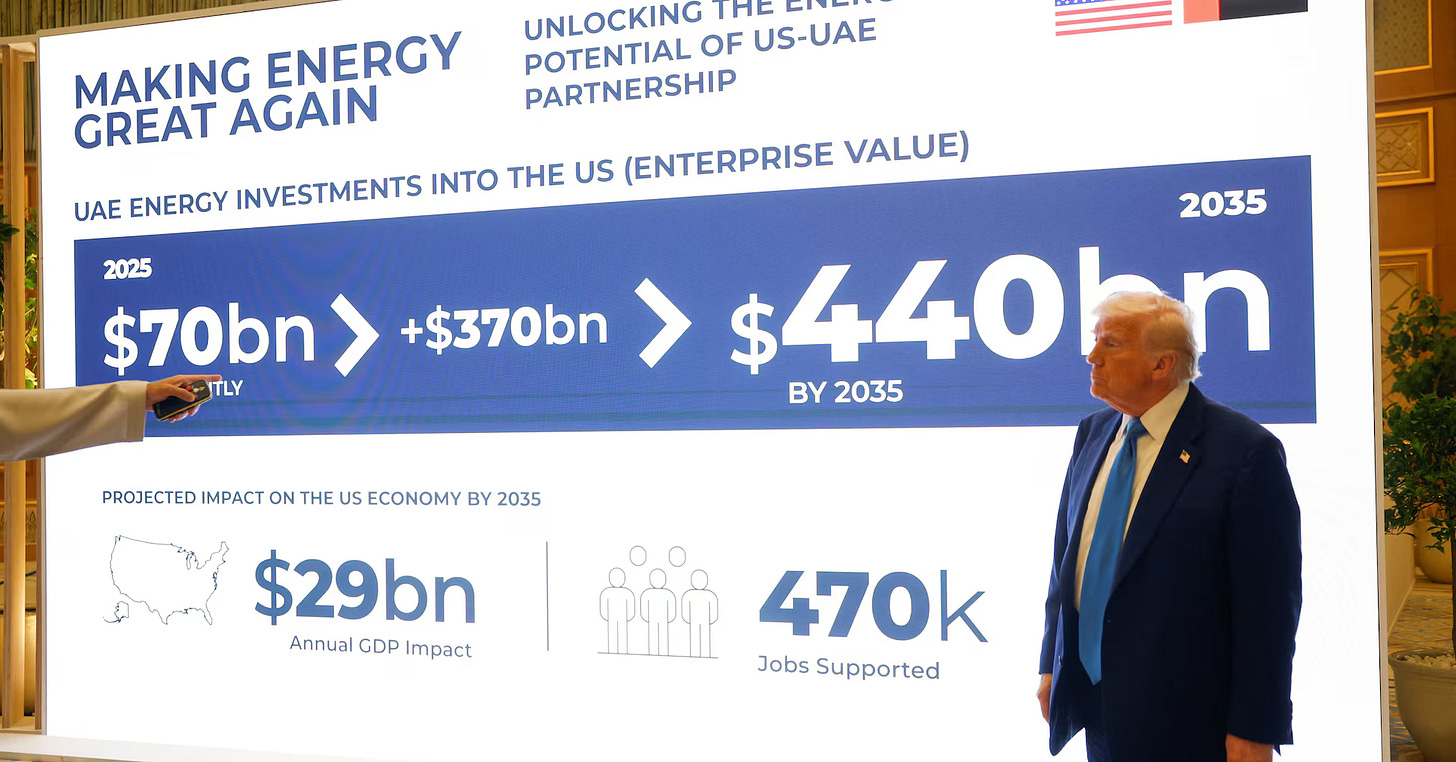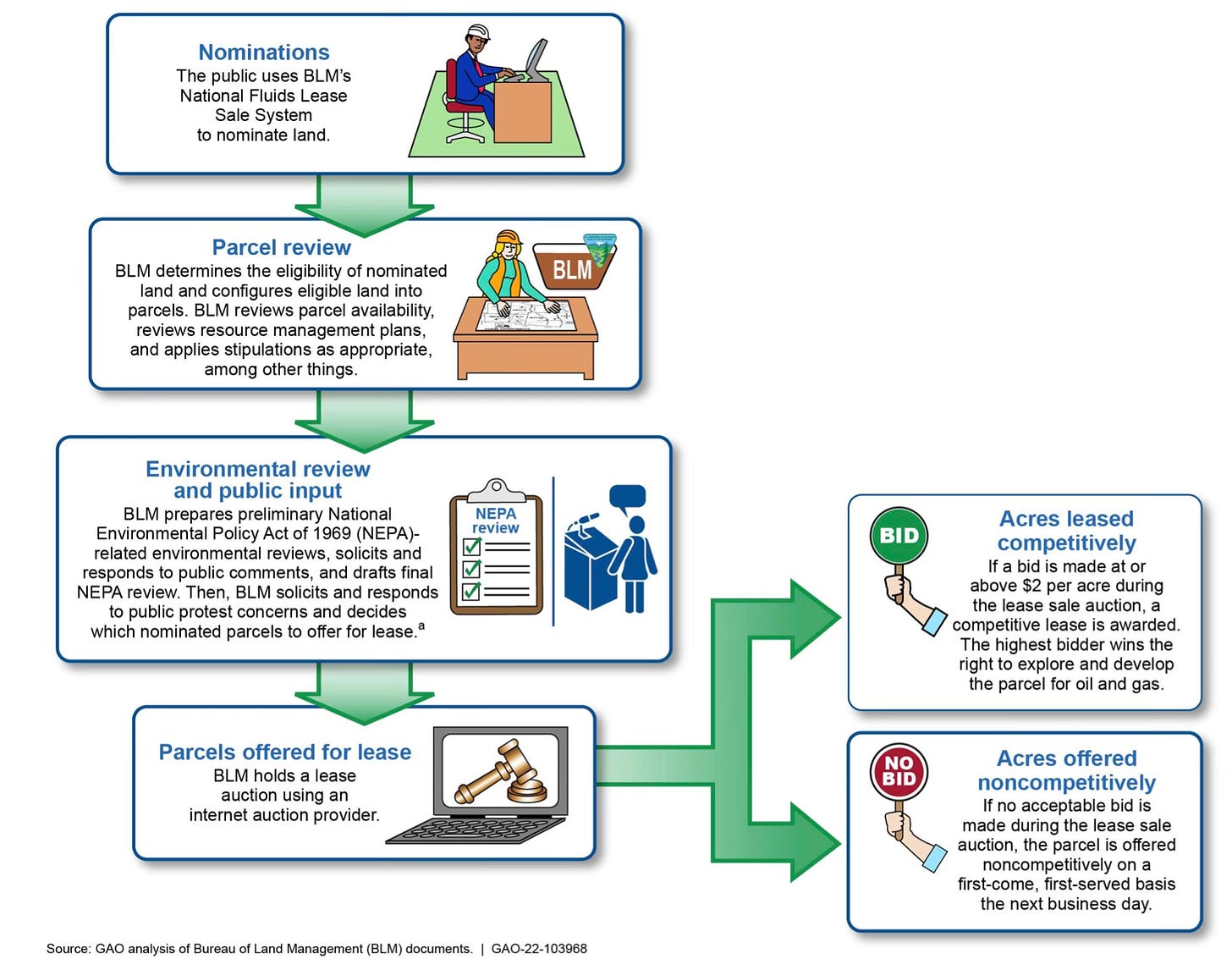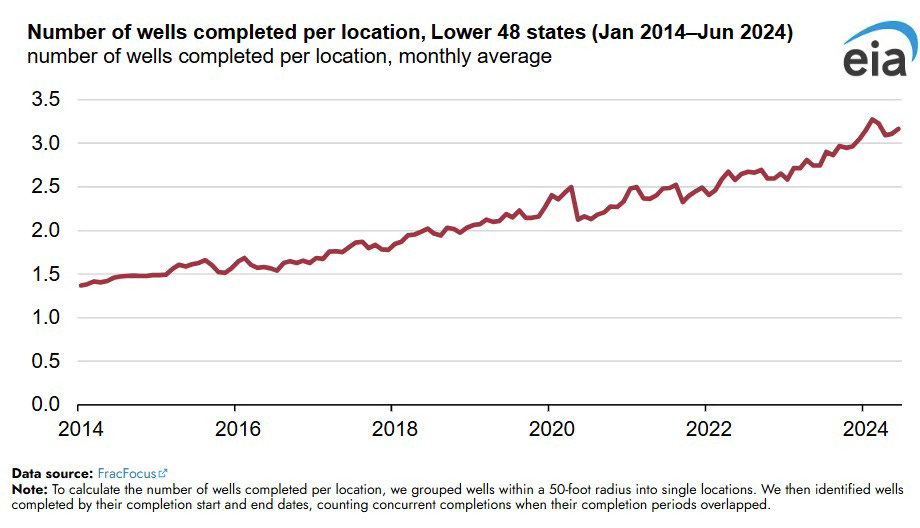Upstream Intel 5/19/25
Gulf money floods Haynesville | DOE and DOI launch deregulatory blitz | Well completions double | New lift methodologies
Welcome back to Upstream Intel, Lease Analytics’ weekly roundup of our analysis and insights. As always, we would love to hear from you with news ideas, feedback and anything else you find interesting.
Sent this by a friend? Sign up here to receive UIW in your inbox.
🕒 Read time: 6 minutes
Data Drill: Persian Gulf meets Gulf of Mexico

Gulf money set to flood the oil patch
A surge of Gulf investment - potentially as much as half a trillion dollars - is coming for U.S. upstream. On the heels of President Trump’s visit to the region, Saudi Aramco has inked 34 preliminary agreements with U.S. companies worth around $90 billion, while the UAE plans to supercharge its American energy investments from $70 billion to a staggering $440 billion by 2035.
The trend marks a sizable shift from passive petrodollar recycling to actively securing strategic positions in Western energy infrastructure while hedging against geopolitical volatility.
The capital flows run both ways, with EOG securing unprecedented rights to explore Abu Dhabi's 900,000-acre unconventional shale block, while Occidental and ADNOC are plotting joint investments in a $500 million Texas carbon capture project alongside UAE oilfield expansions.
Natural gas in particular is a center-point of interest, with Gulf investors focused particularly on LNG infrastructure. Mubadala Energy and Kimmeridge's growing cooperation in Texas gas and Louisiana export projects highlights strategic positioning ahead of projected global gas demand growth. The newfound interest will run into a shortage of quality U.S. land and rising risks of market oversupply.
Buyers scramble for Haynesville assets as competition heats up
In addition to the majors and now the Gulf states, other unconventional buyers like Japanese producers and hedge funds are aggressively competing for the last remaining Haynesville Shale properties.
With 70% of the basin - strategic location near Gulf Coast LNG export terminals - already controlled by just five operators and Henry Hub prices rebounding sharply, the race for diminishing Haynesville inventory has created a seller's market with few remaining acquisition targets.
Regulatory Blitz
Department of Interior moves to shorten lease reviews to 6 months
Interior moved this week to fundamentally restructure its oil and gas leasing process by conducting environmental reviews simultaneously with public comment periods rather than sequentially. The concurrent review is expected to increase the volume of available federal land and cut the timeline from 15 months to just 6.
This procedural overhaul eliminates the requirement that parcels complete National Environmental Policy Act reviews before becoming eligible for lease sales, allowing the Bureau of Land Management to process more applications faster while still technically maintaining legally required environmental assessments.
For select fossil fuel and critical mineral projects, Interior has implemented an even more aggressive 28-day review standard, 12x faster than previous targets. Industry groups welcome these changes as removing Biden-era "roadblocks" to development, though experts warn the compressed timelines combined with significant staffing reductions at federal agencies may create a surge in litigation that could undermine the program's economic benefits.
Department of Energy unveils broad deregulatory effort
The Department of Energy also launched its largest-ever deregulatory initiative, proposing to eliminate or modify over 40 regulations that officials claim will save taxpayers $11 billion. Key changes include streamlining natural gas import/export procedures, removing energy efficiency standards for numerous appliances, and eliminating greenhouse gas emissions reporting requirements that Secretary Chris Wright characterized as "Green New Deal fantasies."
The regulatory rollback triggered immediate legal challenges. Still, energy advocates applaud the deregulation as removing burdensome obstacles to domestic production.
In Other News:
Well completions double as drilling spaces tighten
The number of wells simultaneously completed within 50-foot spaces has more than doubled since 2014, revolutionizing production economics across U.S. oil fields. This dramatic concentration of drilling activity, now averaging over three wells per location, has slashed per-well costs and accelerated production timelines while requiring fewer drilling sites. Electric frac fleets have emerged as the critical technological enabler of this transformation, providing the enhanced power management capabilities necessary for multiple simultaneous completions while reducing dependence on diesel logistics.
Texas energy project costs rise
Soaring construction costs have gutted Texas' $5bn power plant program, with nearly half the projects now abandoned as expenses balloon and supply chains falter. Gas turbine prices have surged 50% in just ten months while wait times stretch to five years. This infrastructure crisis threatens Texas' ability to meet rapidly growing energy demands, with peak usage projected to nearly double by 2030, presenting a stark challenge to Trump's fossil fuel expansion plans even in America's energy heartland.
Lift gets easier as new methodologies rush into the field
New lift technologies are boosting oil field economics, with Baker Hughes' AI-powered Leucipa ESP Optimizer delivering tenfold ROI and extending equipment life in recent Permian Basin trials. Nine Energy and BKV's innovative refrac approaches are simultaneously unlocking vast untapped hydrocarbon reserves in mature fields, addressing the industry's critical shift from volume-focused production to asset efficiency.
Quote of the Week: Shifting priorities
“Seven or eight years ago, [it] was around new tech. It was deeper, hotter, faster equipment. Now they’re saying they need maximum production out of existing assets.”
– Chris Elliott, Baker Hughes lead for oil field services and equipment
What We’re Reading:
Utility Vistra to Buy Natural Gas Assets for $1.9 Billion. (EnergyNow)
Kayne Anderson raises $2.25 billion for third energy income fund. (BOE Report)
Trump Favors $40-$50 Oil, Goldman Says After Sifting Posts. (Bloomberg)
ConocoPhillips trims capex by $500 million but sticks to production target. (Oil and Gas Journal)
APA to Slow Down Activity amid Price Volatility. (Rigzone)
Texas High Court Says Writing Trumps Verbal Drilling Deal. (Law360)
States Sue To Nullify Trump's Energy Emergency Order. (Law360)
Oil Producer Says Hess Corp. Stiffed It To The Tune Of $69M Through Complex Self-Dealing Agreements. (Law360)
SM Energy Hits 1,193 Boe/d Oily 30-Day IP with New Uinta Cube Wells. (Hart Energy)






